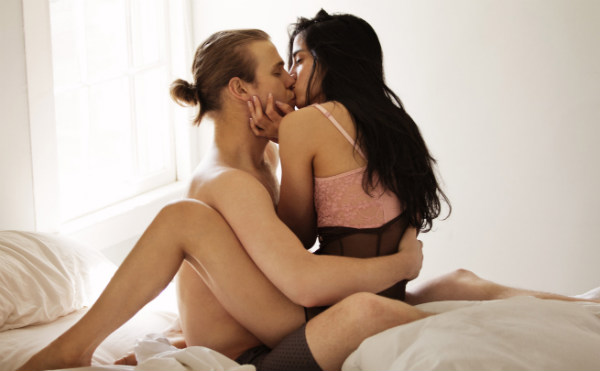Blog Archives
Sexual Orientation! its Meaning -Naira Producers
Posted by Doc Joesmart

SEX AND THE SWEETNESS
Everybody talks about SEX or Love and some of them don’t even know the Meaning of saying “I Love You” Read here!
If you’re anything like me – and most other people – you would
probably answer something along the lines of: ‘It’s the sex I’m
attracted to’ or ‘The genitals I like to bone’.
For the longest time this sat well enough with me. I was happily
attached to the Kinsey scale of sexual orientation. You know: on
the one side is homosexuality, on the other hetero, somewhere in
between is bisexuality, and on either side of bisexuality a blur of
‘sexual fluidity’.
But bisexuality became a problem for me.
You see, I like women. I find them sexually provocative – as
sexually provocative, even, as I find men. But I don’t consider
myself bisexual.
In my mind, if you’re bisexual, it’s not just about whether you find
men and women sexually appealing, it’s that you would happily
enter into a full-on relationship with either.
Although I’m a fan of women, my expression has never moved to
include a more long-term, intimate expression with them. Hence,
I don’t consider myself bisexual.
Unfortunately, this doesn’t sit well with Kinsey’s scale.
And that’s a problem. Because if sexual orientation was just
about which genitals turn you on, does that make me an in-the-
closet bisexual or are all bisexuals really just gay or straight, and
bicurious or fluid?
(Ha. Sit down bisexual peeps, I ain’t dissing. Keep reading…)
Without ruling out the former possibility, the latter gives real
pause for thought. Because how bisexuality has traditionally
been framed in the mainstream, and supported by the Kinsey
scale – is pretty how homosexuality has been framed: it’s ‘just’
about the sex, really. Only heterosexuals seem to have
relationships.
Huh?
If we’re looking at the little box labeled ‘sexual orientation’ is it
possible that the old definitions as laid out by Kinsey need to
expand to more than just sex? Isn’t it time to include ‘relational’,
so that we understand ‘orientation’ as both sexual and relational
across the board?
These were the questions and ideas that were presented to me at
a recent sexology workshop with gender activist and
psychosexual educator Delene van Dyk.
In the presentation of her training modality on gender and sexual
orientation, Binaries and Boxes, she is reformatting how people
understand the complex nature of sexuality.
Delene explains it this way: Imagine there are two boxes, one
labeled ‘sexual and relational orientation’ and the other labeled
‘sexual play’.
Under sexual and relational orientation you have heterosexual,
homosexual (lesbian and gay), bisexual, asexual, polysexual.
This your personal identity, and your emotional and sexual
expression towards others.
Then there is a second box, labeled sexual play. This is where it
gets really interesting. Because this is where stuff like
‘bicuriosity’, ‘fluidity’, MSM and WSM (respectively ‘men who
have sex with men’ and ‘women who have sex with women’) and
so on, find a home.
It’s basically all the possible combinations of body parts – male
or female – that turn us on … regardless of how we identify.
In other words, you can identify as a heterosexual woman or man
– and still enjoy fantasizing and playing with people of the same
sex. You can identify as a lesbian and still enjoy sex with a male
penis from time to time.
You can identify as gay and still
fantasise about smashing your face into a big ol’ pair of pretty
titties on occasion.
Your pure sexual attraction, play and fantasies don’t ‘make’ you
gay or straight or asexual.
‘Kinsey’s scale was about pure sexual attraction, it didn’t
consider emotional attraction and, for me, that’s the gap in his
work,’ says Delene. ‘Your sexual orientation should be your
“sexual and relationship orientation”; it’s about identity, attraction
and relationship formation.
‘It’s the gender that you can be with at your most intimate and
vulnerable with. A bisexual person can feel that deep, intense
level of comfort on a very intimate level – sexually, emotionally
and psychologically – with both sexes.’
The avenues this opens up for how we view and make sense of
human sexuality and relationship building is staggering.
The clarity it will help bring to those who struggle with feelings of
confusion because they have sexual play needs that are in
contradiction to their emotional expression or their identity cannot
be underestimated.
However, there is a chance that those in the closet might use this
new framework to dig deeper into the dark, who have entrenched
themselves in a relationship status and scramble daily for
justifications. Think of the lesbian who has bought into the social
structure of male/marriage/home/two kids…
‘Never underestimate the power of internalised homophobia,’
Delene tells me. ‘Most of us grew up in a very misogynistic,
gender insensitive, homophobic society – don’t underestimate
how powerful that is on the mind of the individual.
‘If you’ve never been capacitated emotionally to be able to step
into own identity and desire, you’ll go into denial – and that is a
very strong defense mechanism.’
I know there are those who will pooh-pooh any talk that tries to
label and create frameworks around sexual orientation – in the
old Kinsey style or Delene’s new structure.
If we were living in utopia where everybody was chillaxed with
their feels and how their fannies are tickled, where there was no
cultural brainwashing and Orwellian levels of denial, I’d agree.
But we don’t.
And any work that strives to bring clarity to the complex topic of
human sexuality and make people’s lives easier or more honest
for it, is fine by me.
Your comments is welcomed. what is Sexual orientation in your own understanding?
Posted in DATING, happiness, INFO, LOVE, marriage, peace, RELATIONSHIP, truelove
Tags: i need a good relationship, i need a wife, Looking for Husband, SEX, sex education, sexual Orientation

